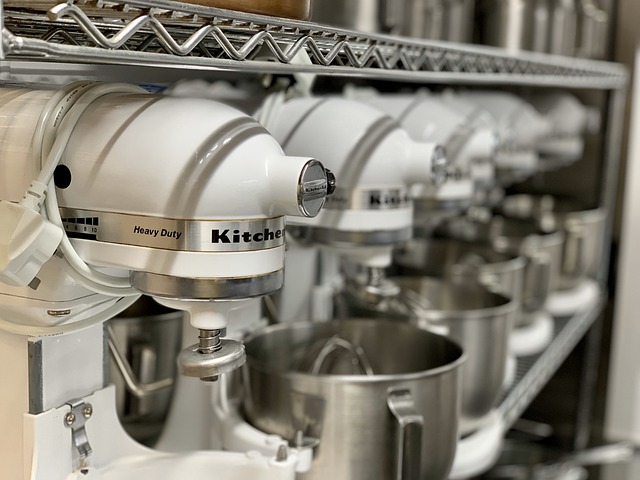Eco-friendly kitchen remodeling is a growing trend among conscious consumers seeking to reduce their environmental impact without sacrificing style. Key elements include energy-efficient appliances, sustainable materials like bamboo and reclaimed wood, recycled countertops, and low-VOC paints. Sustainable cabinetry, efficient storage solutions, and eco-friendly finishes enhance both aesthetics and functionality while minimizing the carbon footprint. By focusing on energy efficiency, using recycled materials, and opting for non-toxic products, homeowners can create beautiful, green kitchens that contribute to a healthier planet.
Looking to transform your kitchen into an eco-friendly oasis? This guide offers professional insights on sustainable kitchen updates, from understanding the core principles of green design to material choices that minimize environmental impact. We explore energy-efficient solutions, popular trends, and inspiration for creating a beautiful, functional space that harmonizes with nature. Discover how to achieve an eco-friendly kitchen renovation without compromising aesthetics or quality.
- Understanding Sustainable Kitchen Design Principles
- – Definition and importance of eco-friendly kitchen remodeling
- – Key considerations for a green kitchen renovation
- Material Choices for an Eco-Conscious Kitchen
Understanding Sustainable Kitchen Design Principles
In the realm of eco-friendly home transformations, the kitchen often serves as a pivotal space for implementing sustainable design principles. When considering an eco-friendly kitchen remodeling project, it’s essential to embrace concepts that minimize environmental impact while enhancing functionality and aesthetics. Sustainable kitchen design encompasses a range of strategies, from selecting energy-efficient appliances to incorporating recycled materials and choosing eco-conscious finishes. For instance, opting for recycled kitchen materials like reclaimed wood or upcycled countertops not only reduces waste but also adds a unique, natural charm to the space.
One key aspect is focusing on energy efficiency through strategic choices like low-VOC paints and finishes, which improve indoor air quality while minimizing volatile organic compound emissions. Additionally, sustainable cabinetry can be designed with efficient storage solutions and made from materials like bamboo or reclaimed wood, ensuring durability and a minimal environmental footprint. These eco-friendly kitchen ideas contribute to a greener lifestyle while creating a stylish, functional space that resonates with today’s conscious consumers.
– Definition and importance of eco-friendly kitchen remodeling
Eco-friendly kitchen remodeling is a growing trend among homeowners looking to create both aesthetically pleasing and environmentally conscious spaces. This approach to kitchen design and renovation focuses on using materials, finishes, and appliances that have minimal negative impacts on the planet. By embracing sustainable kitchen design, individuals not only reduce their carbon footprint but also contribute to a greener future for their communities.
The importance of eco-friendly kitchen remodeling lies in its ability to merge style with sustainability. Traditional kitchens often rely on non-recyclable materials, energy-intensive appliances, and finishes that release harmful volatile organic compounds (VOCs). In contrast, green kitchen renovation encourages the use of recycled kitchen materials, sustainable cabinetry, and eco-friendly countertops. Additionally, energy-efficient kitchens are designed to optimize natural light and incorporate low-VOC kitchen remodels, ensuring a healthier living environment for residents while preserving natural resources.
– Key considerations for a green kitchen renovation
When planning a green kitchen renovation, several key considerations come into play to ensure an eco-friendly and sustainable space. One of the primary focuses should be on energy efficiency. This involves choosing appliances with high energy ratings and incorporating features like smart thermostats and LED lighting. Opting for energy-efficient kitchens not only reduces utility costs but also minimizes your carbon footprint.
Sustainable kitchen design extends to the materials used. Recycled kitchen materials, such as reclaimed wood or recycled glass countertops, are excellent eco-friendly alternatives. Additionally, sustainable cabinetry with non-toxic finishes and low-VOC (volatile organic compound) paints contribute to cleaner indoor air quality. These choices not only benefit the environment but also add unique aesthetic appeal to your kitchen, making it a stylish and responsible upgrade.
Material Choices for an Eco-Conscious Kitchen
When it comes to creating an eco-conscious kitchen, material choices play a significant role in your green kitchen renovation journey. Opting for sustainable cabinetry made from recycled materials or reclaimed wood not only reduces your environmental footprint but also adds unique character to your space. Consider locally sourced and non-toxic finishes to further enhance the eco-friendly aspect.
Additionally, incorporating recycled kitchen materials such as glass, metal, and stone scraps into countertops and backsplashes is an innovative way to divert waste from landfills. Choose low-VOC (Volatile Organic Compound) products to ensure better air quality within your kitchen. This approach aligns with energy-efficient kitchens, as it reduces the need for extensive finishing and provides a healthier living environment.
When embarking on a sustainable kitchen update, professional guidance is invaluable. By prioritizing eco-friendly kitchen remodeling and incorporating principles of green kitchen renovation, from material choices to energy-efficient fixtures, you can transform your space into an environmentally conscious oasis. Remember that each decision, from selecting recycled kitchen materials to opting for low-VOC finishes, contributes to a healthier planet. Embrace these sustainable kitchen design ideas and watch as your remodel becomes a testament to your commitment to preserving the Earth’s resources.
